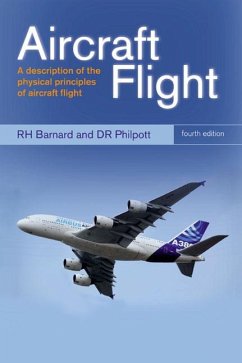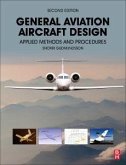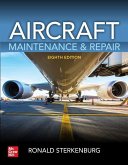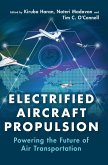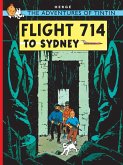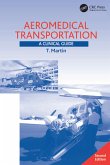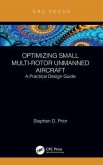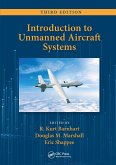The first edition of Aircraft Flight, published in 1989 broke new ground in the field of technical aviation literature by providing accurate physical, rather than mathematical, descriptions of the principles of aircraft flight.
The book has subsequently established itself as a popular and respected introduction to the study of aeronautics, and is now on the recommended reading lists for aerospace and aeronautical engineering courses at a large number of Universities and Colleges around the world.
In this fourth edition, the text and illustrations have been updated, and important recent developments such as unmanned air vehicles and the low-orbit space-plane are covered.
Key features of the fourth edition
additional and updated references and recommendations for further reading
updated photographs and figures
improvements to the technical descriptions, based on a reappraisal and on readers comments
Aircraft Flight will prove invaluable to anyone working or planning a career in aviation. For students of aeronautical engineering, it contains all the descriptive material necessary for courses from technician to degree level, and will provide background reading to the more mathematical texts. For trainee pilots it gives an understanding of the fundamental principles of flight. For new entrants to the aerospace and related industries it provides a basic understanding of the technical principles of flight, and for aviation enthusiasts it gives a non-mathematical treatment they can readily comprehend.
R H Barnard
PhD, CEng, FRAeS; formerly Principal Lecturer in Mechanical and Aerospace Engineering at the University of Hertfordshire.
D R Philpott
PhD, CEng, MRAeS; formerly Principal Aerodynamic Specialist at Raytheon Corporate Jets and Reader in Aerospace Engineering at the University of Hertfordshire.
Features + Benefits
Aircraft Flight will prove invaluable to anyone working in or planning a career in aviation.
For students of aeronautical engineering, it contains all the descriptive material necessary for courses from technician to degree level, and will provide background reading to the more mathematical texts.
For trainee pilots it gives an understanding of the fundamental principles of flight.
For new entrants to the aerospace and related industries it provides a basic understanding of the technical principles of flight
For aviation enthusiasts it gives a non-mathematical treatment they can readily comprehend.
Backcover
The first edition of Aircraft Flight, published in 1989 broke new ground in the field of technical aviation literature by providing accurate physical, rather than mathematical, descriptions of the principles of aircraft flight.
The book has subsequently established itself as a popular and respected introduction to the study of aeronautics, and is now on the recommended reading lists for aerospace and aeronautical engineering courses at a large number of universities and colleges around the world.
In this fourth edition, the text and illustrations have been updated, and important recent developments such as unmanned air vehicles and the low-orbit space-plane are covered.
Key features of the fourth edition:
additional and updated references and recommendations for further reading
updated photographs and figures
improvements to the technical descriptions, based on a reappraisal and on readers comments
Aircraft Flight will prove invaluable to anyone working in or planning a career in aviation. For students of aeronautical engineering, it contains all the descriptive material necessary for courses from technician to degree level, and will provide background reading to the more mathematical texts. For trainee pilots it gives an understanding of the fundamental principles of flight. For new entrants to the aerospace and related industries it provides a basic understanding of the technical principles of flight, and for aviation enthusiasts it gives a non-mathematical treatment they can readily comprehend.
RH Barnard PhD, CEng, FRAeS; formerly Principal Lecturer in Mechanical and Aerospace Engineering at the University of Hertfordshire.
DR Philpott PhD, CEng, MRAeS; formerly Principal Aerodynamic Specialist at Raytheon Corporate Jets and Reader in Aerospace Engineering at the University of Hertfordshire.
Acknowledgements
Introduction
1 Lift
2 Wings
3 The boundary layer and its control
4 Drag
5 High speed flow
6 Thrust and propulsion
7 Performance
8 Supersonic aircraft
9 Transonic aircraft
10 Aircraft control
11 Static stability
12 Dynamic stability
13 Take-off and landing
14 Structural influences
Appendix: Some aerofoil characteristics
References
Index
Aircraft Flight provides accurate physical, rather than mathematical, descriptions of the principles of aircraft flight. This popular text gives mechanical engineering and aeronautical engineering students a useful introduction to the subject. The 4th Edition has been updated to include important recent developments such as unmanned air vehicles and the low orbit space-plane.
Hinweis: Dieser Artikel kann nur an eine deutsche Lieferadresse ausgeliefert werden.
The book has subsequently established itself as a popular and respected introduction to the study of aeronautics, and is now on the recommended reading lists for aerospace and aeronautical engineering courses at a large number of Universities and Colleges around the world.
In this fourth edition, the text and illustrations have been updated, and important recent developments such as unmanned air vehicles and the low-orbit space-plane are covered.
Key features of the fourth edition
additional and updated references and recommendations for further reading
updated photographs and figures
improvements to the technical descriptions, based on a reappraisal and on readers comments
Aircraft Flight will prove invaluable to anyone working or planning a career in aviation. For students of aeronautical engineering, it contains all the descriptive material necessary for courses from technician to degree level, and will provide background reading to the more mathematical texts. For trainee pilots it gives an understanding of the fundamental principles of flight. For new entrants to the aerospace and related industries it provides a basic understanding of the technical principles of flight, and for aviation enthusiasts it gives a non-mathematical treatment they can readily comprehend.
R H Barnard
PhD, CEng, FRAeS; formerly Principal Lecturer in Mechanical and Aerospace Engineering at the University of Hertfordshire.
D R Philpott
PhD, CEng, MRAeS; formerly Principal Aerodynamic Specialist at Raytheon Corporate Jets and Reader in Aerospace Engineering at the University of Hertfordshire.
Features + Benefits
Aircraft Flight will prove invaluable to anyone working in or planning a career in aviation.
For students of aeronautical engineering, it contains all the descriptive material necessary for courses from technician to degree level, and will provide background reading to the more mathematical texts.
For trainee pilots it gives an understanding of the fundamental principles of flight.
For new entrants to the aerospace and related industries it provides a basic understanding of the technical principles of flight
For aviation enthusiasts it gives a non-mathematical treatment they can readily comprehend.
Backcover
The first edition of Aircraft Flight, published in 1989 broke new ground in the field of technical aviation literature by providing accurate physical, rather than mathematical, descriptions of the principles of aircraft flight.
The book has subsequently established itself as a popular and respected introduction to the study of aeronautics, and is now on the recommended reading lists for aerospace and aeronautical engineering courses at a large number of universities and colleges around the world.
In this fourth edition, the text and illustrations have been updated, and important recent developments such as unmanned air vehicles and the low-orbit space-plane are covered.
Key features of the fourth edition:
additional and updated references and recommendations for further reading
updated photographs and figures
improvements to the technical descriptions, based on a reappraisal and on readers comments
Aircraft Flight will prove invaluable to anyone working in or planning a career in aviation. For students of aeronautical engineering, it contains all the descriptive material necessary for courses from technician to degree level, and will provide background reading to the more mathematical texts. For trainee pilots it gives an understanding of the fundamental principles of flight. For new entrants to the aerospace and related industries it provides a basic understanding of the technical principles of flight, and for aviation enthusiasts it gives a non-mathematical treatment they can readily comprehend.
RH Barnard PhD, CEng, FRAeS; formerly Principal Lecturer in Mechanical and Aerospace Engineering at the University of Hertfordshire.
DR Philpott PhD, CEng, MRAeS; formerly Principal Aerodynamic Specialist at Raytheon Corporate Jets and Reader in Aerospace Engineering at the University of Hertfordshire.
Acknowledgements
Introduction
1 Lift
2 Wings
3 The boundary layer and its control
4 Drag
5 High speed flow
6 Thrust and propulsion
7 Performance
8 Supersonic aircraft
9 Transonic aircraft
10 Aircraft control
11 Static stability
12 Dynamic stability
13 Take-off and landing
14 Structural influences
Appendix: Some aerofoil characteristics
References
Index
Aircraft Flight provides accurate physical, rather than mathematical, descriptions of the principles of aircraft flight. This popular text gives mechanical engineering and aeronautical engineering students a useful introduction to the subject. The 4th Edition has been updated to include important recent developments such as unmanned air vehicles and the low orbit space-plane.
Hinweis: Dieser Artikel kann nur an eine deutsche Lieferadresse ausgeliefert werden.

